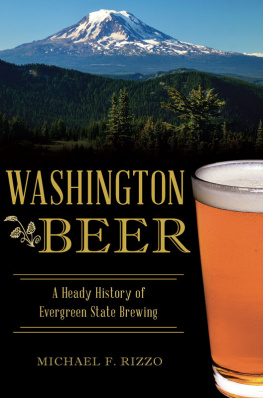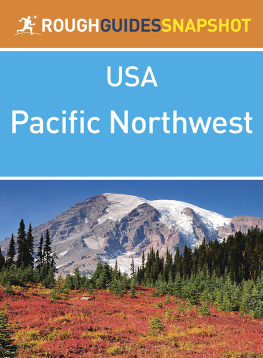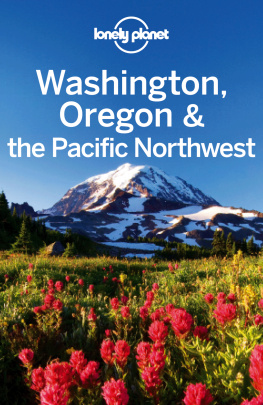E is for Evergreen
A Washington Alphabet
Traverse through the hemlocks, ferry between the islands, or take in the scent of fresh picked apples with authors Marie and Roland Smith in E is for Evergreen: A Washington Alphabet. This childrens pictorial provides a fascinating journey through our 42nd state-the only state to be named after a president. Beginning readers will enjoy the simple rhymes and vivid illustrations while older children discover many detailed facts in the sidebar expository.
Washington natives and visitors alike will enjoy learning why the Peace Arch spans two countries and what role folklore tells us Paul Bunyan played. Find out what began in Spokane in 1910 and which important city was once known as Black Bear Place.
The detailed illustrations from Linda Holt Ayriss evoke a striking sense of adventure and wonder as she captures the rich emerald color of the Darner Dragonfly, the majestic stature of Mt. Rainier, and a variety of animals from Washingtons zoos.
The authors would like to give a special thank you to Mary Palmer and Amy Twito at the Seattle Public Library.
For the letter J: Photo reference courtesy of University of Washington Libraries, Special Collections Division. Negative No. UW 23527z
For the letter L: Photo reference of Bertha Landes courtesy of Scott Kline and the city of Seattle.
For the letter U: Special thanks to William Galvani, director of the Naval Undersea Museum. Also, special thanks to Officer Mike Kolodner.
Credit for observatory photo reference: Stephen R. Stout, Goldendale Observatory.
E is for Evergreen
A Washington Alphabet

Written by Marie and Roland Smith Illustrated by Linda Holt Ayriss
To Jack Charles Glaze.
We will love you all of our days.
AHNA AND GRAMPS
To Dave, Erin, and my mom for all their help and support.
LINDA
A
Washington is the nations top appleproducing state. The apple was selected as the state fruit in 1989, and is the most recognized symbol of Washington worldwide. Americans eat about 20 pounds of fresh apples a yearsix out of ten are Washington apples. Washington grows nine varieties of apples to sell. The apple season starts in August and ends in November. During a season workers handpick over three billion apples for markets all over the world.
Eating crisp, juicy, Washington apples year-round is possible due to a process called controlled atmosphere storage. Apples are stored in specially designed buildings to control the temperature, oxygen, carbon dioxide, and humidity, which slows the ripening process. Timing of harvest is critical for good storage results. Apples picked too soon or too ripe do not store wellthey have to be just right! Apples are given gradesWashington Extra Fancy apples are the very best.
A is for Apple.
So many on a treecrisp and ripe, ready to pick.
Plenty for you and me!

B
Bigfoot is a cryptida cryptid is an animal that is believed to exist, but hasnt been proven to exist scientifically. Cryptozoology is the study of cryptids. Encounters with Bigfoot in the Pacific Northwest have been going on for hundreds of years. Long ago Native Americans called them Sasquatch. Dozens of Bigfoot sightings have been reported around Mount St. Helens. People describing this shy creature say its up to 11 feet tall and weighs up to 2,500 pounds. Apelike with a broad, flattened nose and a lipless mouth, it does not speak but emits a roaring scream.
B is also for the Boeing Company. William E. Boeing lived in Seattle. After attending the first U.S. air races in Los Angeles, he became fascinated with flight and airplanes. His interest would eventually lead to the beginning of the Boeing Company. Boeing is the worlds largest manufacturer of commercial airplanes and spacecraft and it is the Seattle areas largest employer.
B is for Bigfoot.
People wonder to this day, are they fact or fiction?
Its difficult to say.

C
While sailing around the world in 1792, Captain Robert Gray found the Columbia River and named it after his ship, Columbia Rediviva. Starting at the base of the Canadian Rockies, the river flows down and across Washington for more than 1,200 miles before joining the Pacific Ocean. It has 10 major tributaries. (A tributary is water that flows into a larger body of water.) Its most important tributary is the Snake River. The Columbia is the largest river in the western United States.
C is also for the Columbian mammoth, Washingtons state fossil since 1998. About two million years ago the first North American mammoths migrated across the Bering Strait from Asia down through Alaska. The mammoths became extinct about 10,000 years ago. Fossils of the Columbian mammoth have been discovered on the Olympic Peninsula.
C is for Columbia River, through our state it flows.
Other rivers adding to it, along the way it grows.

D
The Green Darner Dragonfly became the official state insect in 1997 after students at Crestwood Elementary in Kent brought the idea of a state insect to the legislature. Children all over the state voted and the Green Darner Dragonfly won.
Dragonflies, like the dragons of legends, have powerful heads with large jaws, and very long tails. Although its wingspan is only four to six inches, it can fly 25 to 35 miles per hour. The Washington State dragonfly is easy to recognize by its bright green color. Some people are afraid of dragonflies, but they are harmless. Lucky for us, one of its favorite foods is the mosquitoearning the nickname mosquito hawk.
Washington has a dragon.
Its tiny but it can fly.
Dragonfly starts with D.
How many can you spy?

E
Washington was nicknamed the Evergreen State because of its abundant forests. Some are old growth forests that have been undisturbed by humans for centuries and have a multilevel canopy. Ancient trees tower over younger shadetolerant trees. Downed logs and standing dead trees, called snags, provide homes for dozens of birds, mammals, and insects. The snags slowly decompose and return nutrients to the soil.
Washington also has temperate rain forests with huge Sitka spruce, western hemlock, Douglas fir, and western red cedar trees all at the top. Then come bigleaf maples, black cottonwoods, and red alder. At the bottom are vine maple with many ferns and mosses that give the ground a soft cover. Up to 200 inches of rain a year keep these rain forests green. The word temperate describes the temperatures as moderate, neither hot nor cold.
The Olympic National Forest has temperate rain forests and old growth forests. Some parts of these forests are both temperate rain forest and old growth combinedbut not always!
E














